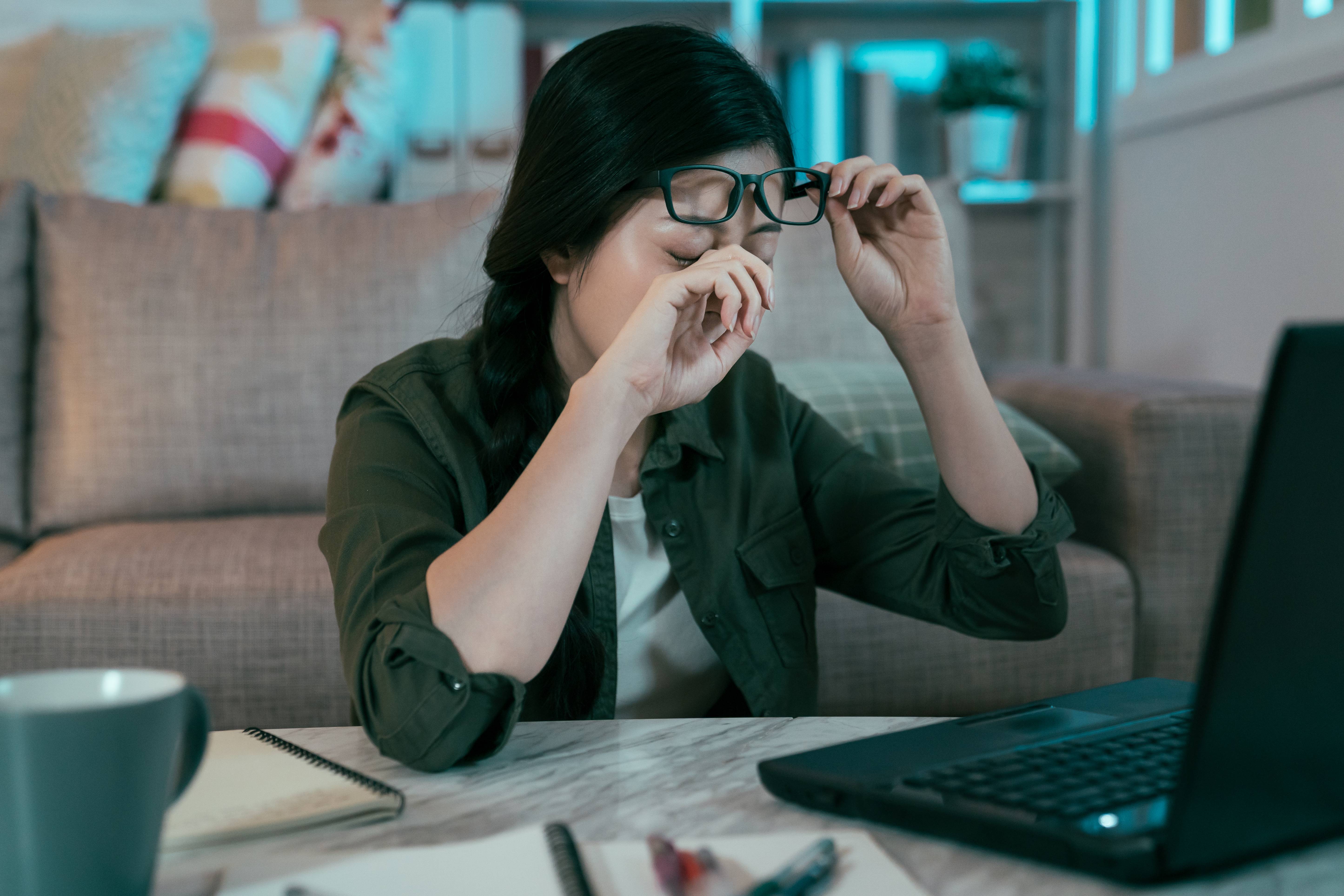DED Symptoms Are More Common Post Covid-19
POST-COVID-19 CONDITIONS and DED SYMPTOMS
In the last 2 years, almost 600 million patients have been diagnosed with COVID-19. Not only the pandemic caused many deaths but infected people are also facing the risk of post-COVID-19 conditions.1
Post-COVID-19 conditions are a wide range of health problems people experience after being infected with SARS CoV-2, the virus causing COVID-19. These conditions can last weeks, months, or years and sometimes can even go away and then come back again. Anyone infected with SARS CoV-2 can have post-COVID conditions, even in people with mild or no symptoms of COVID-19.2
Symptoms of post-COVID-19 conditions may vary from non-specific (like tiredness or fatigue) to those that involve the respiratory, cardiovascular, neurological, or digestive systems.2 Symptoms of dry eye disease (DED) were also noted to be common.3
Researchers from the Chinese University of Hong Kong have found that 1 in 5 post-COVID-19 patients suffer from at least 1 symptom related to dry eye disease including blurred vision, itchy eyes, pain or burning sensation, and redness. They also noted that the symptoms tend to be more intense with increasing severity of COVID-19 infection.3

COVID-19 and Dry Eye Disease (DED)
What Is DED?
Dry eye (keratoconjunctivitis sicca) is a condition that happens when your eyes become irritated because of insufficient tears production by tear glands, or when tears evaporate too quickly. DED is often chronic and can even occur in healthy people.4 In severe cases it can also cause vision problems.1
Some of the most common symptoms that you may have DED include:5
 Burning, gritty or itchy sensation
Burning, gritty or itchy sensation Eye redness
Eye redness Presence of stringy mucus
Presence of stringy mucus Increased tearing from irritation
Increased tearing from irritation Blurring of vision
Blurring of vision
How Can COVID-19 Cause Dry Eyes?
Researchers have proposed possible links between SARS-CoV-2 and development of DED. In addition, the physical or lifestyle changes brought about by the pandemic may contribute to DED.
- The presence of the virus can alter the eye surface microenvironment, including the microbiome. This can lead to complications in the eye surface, one of which is the dysfunction of meibomian glands in your eyes.3 Those glands do not secrete enough oil into the tear film and cause your tears to evaporate more quickly.
- SARS-CoV-2 infection may induce structural alterations in tiny nerve fibers of the eye surface, which are associated with the onset of DED. The severity of those changes is proportional to the intensity of DED symptoms.6
- Finally, even uninfected, you can also get DED because of the increased screen time since the outbreak of COVID-19,7 or because the leakage of airflows around the masks you wear daily reach your eyes and dry them out.8
Can Your Eyes Be Affected By COVID-19 Treatments?
One of the reasons explaining the association between DED and the severity of COVID-19 may be the treatment in the acute phase. When hospitalized due to severe COVID-19, patients often undergo mechanical ventilation. This process can lead to fluid retention in the eyes (conjunctival swelling) and impairs eyelid closure. Moreover, medicines used during ICU admission can reduce blink reflex and the toning of the muscles that keep the eyelids closed. The airflow from the oxygen delivery system can lead to evaporation of the tear film. However, the long-term effect on tear film following COVID-19 treatment has not been studied yet, particularly in those that had received supplementary oxygen.3
Tips To Reduce The Risk Of DED
Many tips help relieve your symptoms of dry eyes. Here are some that you can apply:5,9
- Make sure your mask fits correctly across the top of your nose and do not brush against your lower eyelids.
- Instil artificial tears frequently to moisturize your eyes. Depends on the severity of your symptoms, you may need to drop several times a day or only once a day.
- Switch from contact lenses to glasses or use the lenses specifically designed for dry eyes. Those types of lenses help protect the surface of the eyes and maintain the moisture.
- Soothe your eyes with a warm compress daily. This will help relax your eyes.
- Blink frequently and employ the 20-20-20 rule during screen time: Every 20 minutes, take a 20- second break and look at something at least 20 feet (6 m) away.
- You can also take some omega-3 or fish oil to improve symptoms of dry eyes. Some trials have shown the benefit of these supplements.
- Wear your sunglasses before going outside to avoid exposure to sun and wind. The longer time you expose to sun and wind, the higher rate your tears evaporate.
When To See A Doctor
When your post-COVID dry eyes symptoms persist or worsen even with lifestyle changes and over the counter products, or your eye is painful and red with or without changes in the shape of your eyelids, you should consult an ophthalmologist. The treatments at clinics include either medications or procedures:10,11
- Doctors may prescribe medications to reduce eye inflammation or add more fluid to your eyes. These medications can be eyedrops, ointments, gels, etc.
- You may also be treated with other devices or procedures to retain fluid in your eyes and improve your DED symptoms.

- WHO Coronavirus (COVID-19) Dashboard. World Health Organization. https://covid19.who.int. Accessed 15th Aug 2022
- Long COVID or Post-COVID Conditions. U.S. Center for Disease Control and Prevention. https://www.cdc.gov/coronavirus/2019-ncov/long-term-effects/index.html. Accessed 15th Aug 2022
- Wan KH, Lui GCY, Poon KCF, et al. Ocular surface disturbance in patients after acute COVID-19. Clin Exp Ophthalmol. 2022;50(4):398-406.
- Dry eye syndrome. MedlinePlus. https://medlineplus.gov/ency/article/000426.htm. Accessed 15th Aug 2022
- What Is Dry Eye? Symptoms, Causes, and Treatment. American Academy of Ophthalmology. https://www.aao.org/eye-health/diseases/what-is-dry-eye. Accessed 15th Aug 2022
- Barros A, Queiruga-Piñeiro J, Lozano-Sanroma J, et al. Small fiber neuropathy in the cornea of Covid-19 patients associated with the generation of ocular surface disease. Ocul Surf. 2022;23:40-48.
- Saldanha IJ, Petris R, Makara M, Channa P, Akpek EK. Impact of the COVID-19 pandemic on eye strain and dry eye symptoms. Ocul Surf. 2021;22:38-46.
- Moshirfar, M., West, W.B. & Marx, D.P. Face Mask-Associated Ocular Irritation and Dryness. Ophthalmol Ther. 2020;9:397–400.
- Dry eye. Cleveland Clinic. https://my.clevelandclinic.org/health/diseases/9030-dry-eyes. Accessed 15th Aug 2022
- Dry Eyes. National Health Service. https://www.nhs.uk/conditions/dry-eyes/. Accessed 15th Aug 2022
- Dry Eyes. Mayo Clinic. Dry eyes - Symptoms and causes - Mayo Clinic. Accessed 15th Aug 2022
Five‐item Dry Eye Questionnaire (DEQ-5).
관련 게시물
Five‐item Dry Eye Questionnaire (DEQ-5).
Five‐item Dry Eye Questionnaire (DEQ-5).









